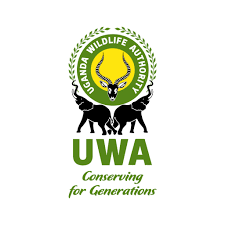Bigodi Wetland Sanctuary: Uganda’s Community Treasure Beside Kibale
Just outside the dense canopy of Kibale Rainforest, where chimpanzees swing through the treetops and elephants wander in the shadows, lies a different but equally captivating ecosystem—Bigodi Wetland Sanctuary. This community-managed reserve is a haven of biodiversity, culture, and conservation, where the still waters of papyrus swamps, palm-dotted wetlands, and rich forests create a landscape that is both peaceful and alive with life. For travelers exploring Uganda’s primate capital, Bigodi is the perfect complement to chimpanzee trekking, offering encounters with birds, monkeys, and village traditions in a setting that feels intimate and authentic.
The sanctuary covers about 4 square kilometers, but its richness is astonishing. Wooden boardwalks and narrow trails wind through the papyrus and forest, leading visitors into a world where every step reveals new wonders. Over 200 bird species have been recorded here, making Bigodi a magnet for birdwatchers from across the globe. Among its most famous residents is the rare great blue turaco, with its vibrant plumage of turquoise and yellow, often spotted gliding gracefully between the trees. Other highlights include hornbills, kingfishers, weavers, and the elusive papyrus gonolek, whose crimson and black colors flash against the reeds.
Beyond its avian life, Bigodi is also a stronghold for primates. Eight species are commonly seen here, including black-and-white colobus, red-tailed monkeys, grey-cheeked mangabeys, and the playful L’Hoest’s monkey. On a lucky walk, visitors may even encounter chimpanzees venturing out from Kibale Forest. Alongside these primates, the wetlands shelter bushbucks, otters, and a wide variety of butterflies, creating an environment that brims with natural diversity at every turn.
What makes Bigodi unique, however, is that it is more than just a wildlife sanctuary—it is a community-led conservation project. Managed by the local KAFRED (Kibale Association for Rural and Environmental Development), the sanctuary was created to protect the wetlands while also improving the livelihoods of nearby villagers. Revenue from guided walks is invested back into community projects, such as schools, health centers, and small businesses. For visitors, this adds a profound dimension to the experience, knowing that each walk contributes to the well-being of the very people who protect the land.
Cultural encounters are also part of the Bigodi journey. Visitors can join community tours to learn about local traditions, farming practices, and crafts. Handwoven baskets and mats made by women’s groups showcase the artistry of rural Uganda, while storytelling and dance performances reveal the spirit of the people. This blending of nature and culture gives Bigodi its special character—it is a place where the richness of the environment is inseparable from the lives of those who depend on it.
A walk through Bigodi Wetland Sanctuary is both tranquil and immersive. The air is alive with birdsong, the boardwalk creaks softly underfoot, and the sight of a monkey leaping between trees or a flash of a rare bird across the reeds brings quiet excitement. Unlike the more intense treks of Kibale, Bigodi offers a slower pace, perfect for reflection, photography, and appreciating the subtle details of Uganda’s landscapes.
For travelers, Bigodi is more than an optional excursion—it is an essential experience that captures the essence of sustainable tourism in Uganda. It proves that when communities and conservation work hand in hand, both nature and people thrive. To visit Bigodi is to witness this harmony, and to leave with not just memories of wildlife, but a deeper understanding of how conservation and community coexist in Uganda’s heartland.




